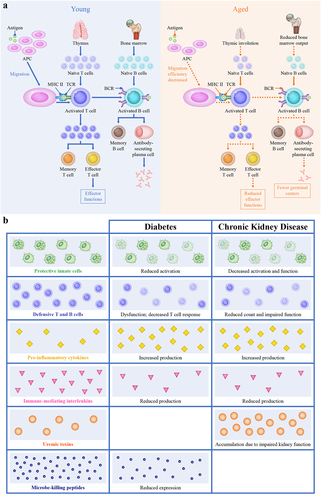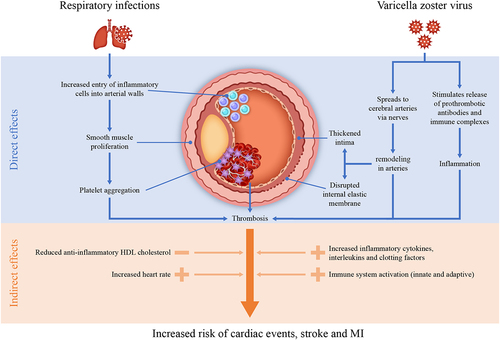Figures & data
Table 1. Incidence, YLD, death and YLL in patients with NCDs in 2017.Citation4-7,Citation10,Citation11
Citation13,Citation16,Citation17,Citation19-22,Citation31,Citation32
Figure 1. Immunologic differences in (a) older individuals and (b) those with chronic diseases.

Figure 2. The effect of VPDs.

Table 2. Recommendations for vaccinations in adults with key chronic diseases provided by various guidelines across the world.Citation66-88
